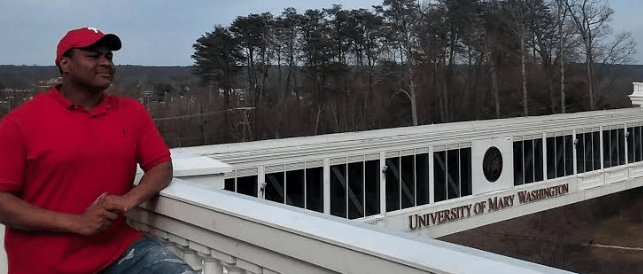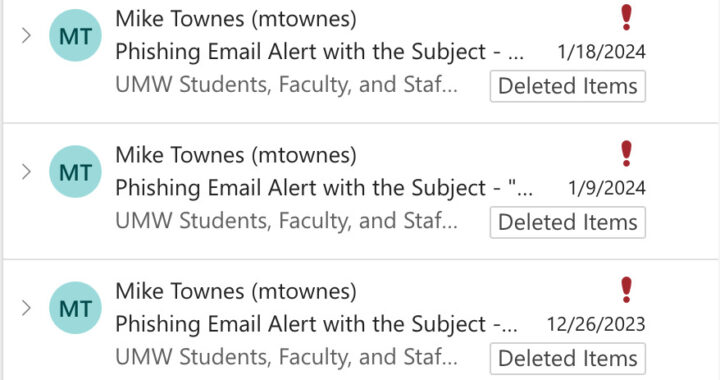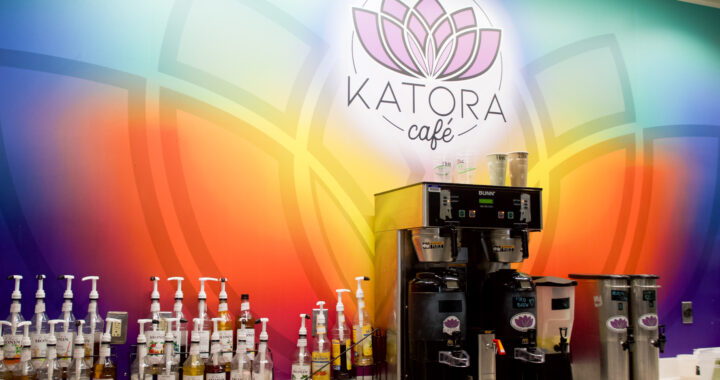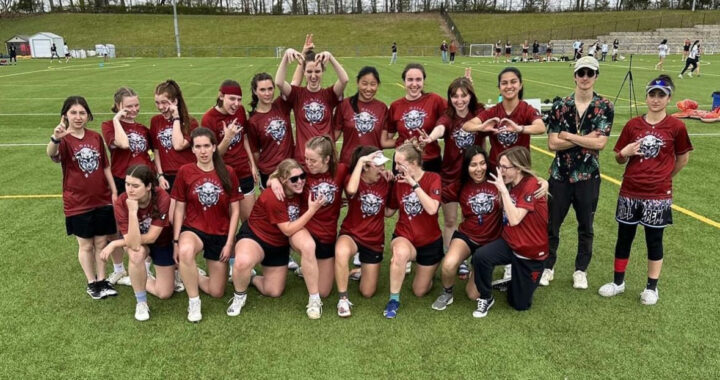Why some students take a greater leap towards success even after receiving a higher education
8 min read
Ester Salgaro | The Blue & Gray Press
By ESTER SALGUERO
Contributing Writer
Patrick Tompkins, a Rappahannock Scholar and advisory board member for the program, knew from a young age that he wanted to go to college to live out his mother’s dream.
Angel Archie, Tompkins mother, worked three jobs to support their family in King and Queen County, Virginia. She was finishing out her studies at J. Sargeant Reynolds Community College to become an upper respiratory therapist when she passed away. It was three months from when she was expected to graduate. Tompkins was 11 years-old.
“That has always been a thing for me that I keep in the back of mind, that I would go to college just to finish a step that she didn’t get to finish,” said Tompkins, who now studies business administration.
He graduated from high school with a 3.7 GPA and was admitted to several colleges around the country, a feat that was impressive to his fellow students at King and Queen Central. But he wasn’t sure if he could afford to go.
Then his guidance counselor told him about the Rappahannock Scholars Program, which might allow him to get a full ride to the University of Mary Washington. Six of these scholarships are given to under-represented students each year.
The Rappahannock Scholar program also takes on students who receive some aid, but not full scholarships. Tompkins is grateful for the opportunity he received at Mary Washington. Now as a senior, he works to provide counseling to incoming freshman who are a part of the scholars program.
But Tompkins knows that the opportunity he was given is a rarity for students in his position. While the school is committed to admitting more students from underrepresented groups, it doesn’t always happen.
According to an ongoing study, called the “Equality of Opportunity Project,” the University of Mary Washington admits fewer low-income students than other schools in the state. Only two of every 100 students on campus, or 1.3 percent, have parents from the bottom 20 percent of the income distribution at Mary Washington.
For reference, at Marymount University and Mary Baldwin University, 10 percent and 7 percent of students have families from the bottom 20 percent. Some reasons for this low rate of admission include the reputation that the school has for being mostly white and having fewer social activities, which deters students from enrolling.
As well as relatively few and hard-to-navigate financial opportunities, unlike the Rappahannock Scholars Program, to help underrepresented students who otherwise wouldn’t have the means.
WHERE UMW RANKS
The “Equality of Opportunity Project” investigates the number of low-income students who are admitted to universities around the country and what their chances are for upward mobility.
Since 2011 there have been multiple papers published through this project, along with data spreadsheets explaining the rates and numbers calculated for this project, which are updated every year. It was designed by professors at Stanford, Harvard and Brown.
The study is interested in determining students’ rate of upward mobility, which is calculated by figuring out the fraction of students who come from families in the bottom fifth of income distribution and finding out which of these students make it to the top 20 percent range in the years soon after graduation.
Compared to Marymount University, which has a mobility rate of about 3.4 percent, Mary Washington has only a 1 percent mobility rate. This is in large part due to the school’s low rate of admission for low-income students to start with. Marymount has an 8.1 percent advantage over UMW in the amount of bottom quintile students that they admit, making their mobility rate higher.
Marymount’s average parent household income is about $91,000 as opposed to UMW’s $133,800. Their median child earnings after graduation are $35,800 and UMW’s students are likely to make up to $50,000 dollars after graduating.
Interestingly, low-income students who come to Mary Washington do well after leaving. Roughly 60 percent make it to the top 20 percent. Marymount’s number, in comparison, is 27 percent. This disparity, however, may just be because of Mary Washington’s small sample size.
Several factors contribute to these numbers. Here, we look at a few.
THE BURDEN OF LIBERAL ARTS COLLEGES
Liberal arts colleges are generally smaller and have less student tuition funds to keep them afloat, so they often require more external financing from private donors than campuses with larger populations. One way they do this is through endowments.
Endowments are the money universities raise and invest to secure their long-term financial status. This is also where full-ride scholarships come from. So, when the size of an endowment is low, fewer low-income students can attend.
According to the UMW Common Data Set, a collection of statistical information about the student population put together by every higher education institution, between fall 2014 and fall 2017 the average total reported endowments received by the university amount to about $1 to $1.7 million dollars.
By comparison, in 2017 Marymount’s endowment was about $2 million dollars, according to their own Common Data Set numbers.
Statistical analysis provided by the “Equality of Opportunity Project,” shows that there are more students admitted to colleges from the top 1 percent of the economic income distribution range than from the bottom fifth quintile. This is possibly due to students being unable to support themselves through their first year of higher education and very few universities have the funds to ‘level the playing field.’
Regardless of whether universities admit more high-income students or low-income students, generally, higher education is supposed to be the equalizing variable. Many students who attend college end up reaching higher income brackets when they graduate.
Schools that can get those students from the bottom fifth to the top 1 percent are usually Ivy-League universities, because they have the funds to admit students regardless of need.
A non-profit transparency organization known as “Open the Books,” aims to disclose spending records of institutions at all levels of government. Recently, they conducted an investigative research project divulging the amount of government money that goes to Ivy League colleges.
What they found was that, because these schools are registered as nonprofits, they don’t have to pay taxes on these endowments. The organization created an imaginary timeline, they calculated how much money was gained and how it might be used, to show how this money could increase if a tax reform is not established. According to the study, there is only a 1.4 percent tax on endowments to universities like Yale.
WHY GENDER MIGHT MATTER
What is not as clear, however, is how gender plays a role in endowment funds to universities and whether this role has any relationship to why low-income students may not receive admission at the same rate of other schools. For Mills College, a women’s institution, the university draws in large endowment funds and has a high rate of upward mobility that measures at 3.28 percent in comparison to UMW’s one percent rate.
Mills College has a demographic of 32 percent first-generation undergraduate students of which 40 percent are eligible for Pell grants and a highly diverse student body, according to the Vice President for Institutional Advancement, Jeff Jackanicz.
“My intuitive hunch is that women’s colleges’ endowments range from large to small for the same reasons that co-ed institutions’ endowments range from large to small,” said Jackanicz.
Mills received a generous amount of funds in endowments this year which totaled $183 million, a significant portion of those funds go towards scholarships for students. Jeff says that there are many factors which contribute to the varied amounts of endowment funds for different liberal arts institutions.

The size of the school, geographic location, historic religious affiliation and institutional priorities all need to be included in figuring out how to close the income gap.
“Sometimes schools that have historically been funded by a particular religious order have a hard time raising funds because alums assume the church is still funding it in full and some schools focus on raising ‘current use’ funds instead of endowments,” says Jeff. In other words, there are many factors.
A few theories have been discussed among development officers at higher education institutions. One factor that has been considered is women’s salaries which have historically been lower than men’s.
EXPANDING OPPORTUNITY
According to the Office of Financial Aid, in May 2014 students received $3,049,248 million in university financial aid, which increased to $6,191,128 million since then.

Along with the Rappahannock Scholars Program, UMW has the James Farmer Scholars Program that is very similar. The program assists students from the beginning of seventh to eighth grade and encourages students to academically prepare for college. Only twelve students from each of the four counties of Caroline, Fredericksburg, Spotsylvania and Westmoreland, are selected into the program.
There are other scholarships on campus that address the opportunity gap such as the Dorsey Scholarship, given to UMW in 2008 that amounted to $1.1 million dollars. Each year a minimum of five full-time undergraduate students of diverse backgrounds, including race, ethnicity, culture, socioeconomic status, disability, religion and geography are eligible to receive the scholarship.
According to the university’s assembly speech for the 2017 fall semester President Troy Paino, said there are approximately 18 percent Pell Grant eligible students that attend the University of Mary Washington.
Federal Pell Grants are available to students through FAFSA and are distributed based on need. Need base is determined by calculating how much the student’s parents can contribute to financial aid and how much the cost of attendance is for a given institution. For the class of 2019, 43 percent are underrepresented students. Meaning 43 percent come from one of the listed locations or demographic areas listed above.
The school has other ways to determine whether it’s reaching out to as wide a pool of students as possible, separate from the goals of the “Equality of Opportunity Project.” They use separate measures to determine whether a student comes from an underrepresented population.
Not all these students come from low-income backgrounds. They include both low-income or economically disadvantaged students, and first-generation students, minority groups or students coming from certain urban areas.
For example, the school considers students who come from farming communities, mountain communities and communities from the Northern neck area of Virginia, where there is a high rate of poverty as underrepresented populations. These students might not fall into the low-income bracket.

“It’s not that they’re all low-income based [but] it could be that they are disadvantaged because they are coming from an area or a high school where they didn’t have opportunities,” says Heidi Hunter, director of Financial Aid at Mary Washington.
To decrease the opportunity gap even further, Hunter says that resources need to be established at the state level. When a student comes from a high school that is lacking in resources that translates to how well a student will do in college.
“A student who is prepared, might find it difficult but a student who is unprepared will find it that much more difficult because they didn’t have counselors, or they didn’t have special tutoring, or all these other pieces [and they] end up coming to a college campus and floundering,” said Hunter.
Tompkins believes that the university could put more effort into admitting and keeping underrepresented students. For him and his friends who started the program, it was tough to relate to most students on campus. The transition was difficult, but he still recommends and advises possible incoming students from Central High School to come to Mary Washington because it is likely that they wouldn’t find a better opportunity financially.











